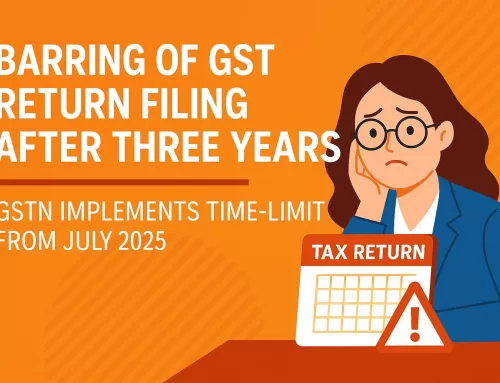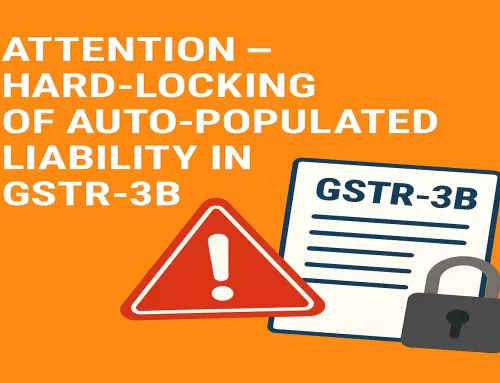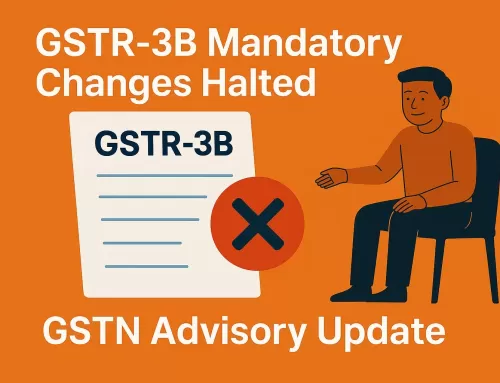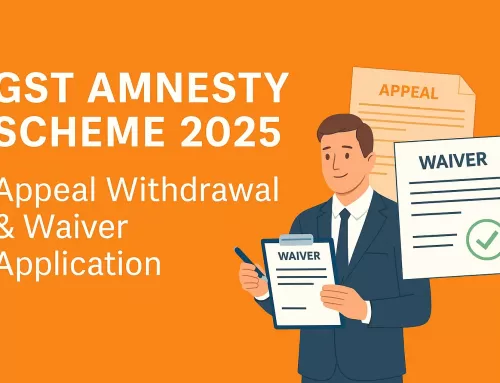GST Registration Process 2025: Step-by-Step Guide, Documents & Status Check
In recent years, GST practitioners and business owners have reported many complaints. They mentioned delays, harassment, and unclear processing during GST registration. Applicants often faced repeated document requests, unclear rejections, and physical verifications without proper intimation. This led to frustration among genuine businesses and professionals.
To address these challenges, the Central Board of Indirect Taxes and Customs (CBIC) issued revised instructions on April 22, 2025, to streamline GST registration. These reforms aim to balance ease of doing business with curbing fake registrations. The new process introduces better accountability, especially in field office verifications, with approval from senior officers like Joint Commissioners and clear documentation.
This guide helps you with the GST registration process. It covers the needed documents and how to check your application status on the GST portal.
1) What is GST Registration in India?
GST (Goods and Services Tax) registration is a legal process in India. It allows a business to enroll in the GST system. Once registered, the business gets a unique GSTIN (Goods and Services Tax Identification Number). This number allows businesses to collect tax from customers, claim input tax credit, and legally operate as a GST-compliant entity.
2) Eligibility/Mandatory Requirements for GST Registration
GST registration is mandatory for:
-
Businesses with aggregate turnover exceeding ₹40 lakhs (₹20 lakhs for services) in most states.
-
Entities involved in the interstate supply of goods or services.
-
E-commerce sellers and aggregators.
-
Casual taxable persons and non-resident taxable persons.
-
Businesses liable under the reverse charge mechanism.
-
Agents of a supplier and input service distributors.
-
Anyone who deducts TDS/TCS under GST.
Voluntary registration is also allowed for smaller businesses.
3) Why is GST Registration Important?
-
Legal compliance: Required to conduct business legally under the GST law.
-
Input Tax Credit: Allows businesses to claim tax credit on purchases.
-
Competitive Advantage: Builds trust and enables partnerships with larger, compliant entities.
-
Easier Expansion: Necessary for interstate business and selling on e-commerce platforms.
-
Avoid Penalties: Non-registration attracts heavy fines and penalties under GST law.
Step-by-Step GST Registration Procedure (Updated for 2025)
- Visit the GST Portal: Go to gst.gov.in and click on ‘Services’ > ‘Registration’ > ‘New Registration’.
- Part A – Basic Information: Fill in PAN, email ID, and mobile number. Verify via OTP.
- Generate TRN: A Temporary Reference Number (TRN) is issued to proceed to Part B.
- Part B – Business Details: Enter business information, select registration type, and upload documents.
- Upload Required Documents: Submit identity proof, address proof, bank details, and photographs.
- Aadhaar Authentication: Choose Aadhaar verification for quicker approval (within 3 working days).
- Officer Verification (if applicable): Physical verification may be triggered; now allowed only with prior Joint Commissioner approval and photo documentation.
- Certificate Issuance: After approval, your GSTIN is generated, and the certificate is available for download in PDF format.
Documents Required for GST Registration
This is a critical part of the application. Ensure you have the correct documents ready.
1. Documents for Principal Place of Business (PPOB)
The documents required for the Principal Place of Business vary depending on the nature of the premises:
- Owned Premises:
- Any document establishing ownership, such as:
- Latest Property Tax receipt
- Municipal Khata copy
- Copy of Electricity Bill
- Water bill or any other document prescribed under State or local laws
- Note: Only one ownership document is required.
- Any document establishing ownership, such as:
- Rented Premises:
- If the Rent/Lease Agreement is registered:
- Valid Rent/Lease Agreement
- Any document establishing ownership of the premises by the lessor (as listed above)
- Note: Identity proof of the lessor is not required if the agreement is registered.
- If the Rent/Lease Agreement is not registered:
- Valid Rent/Lease Agreement
- Any document establishing ownership of the premises by the lessor (as listed above)
- Copy of the identity proof of the lessor
- If the electricity or water connection is in the applicant’s name:
- Document evidencing the electricity/water connection in the applicant’s name
- Rent agreement
- Note: No additional documents pertaining to the lessor are required in this case.
- If the Rent/Lease Agreement is registered:
- Premises not covered above (e.g., owned by spouse, relative):
- Consent letter from the owner of the premises
- Copy of the identity proof of the person granting consent
- Any document establishing ownership of the premises by the consenter (as listed above)
- Shared Premises:
- If a Rent/Lease agreement is available:
- Copy of the agreement
- Any document relating to the ownership of the premises (as listed above)
- If the Rent/Lease Agreement is not registered:
- Agreement
- Any document establishing ownership (as listed above)
- Copy of the identity proof of the lessor
- If the Rent/Lease Agreement is registered:
- Agreement
- Any document establishing ownership (as listed above)
- Note: No identity proof of the lessor is required.
- If a Rent/Lease agreement is not available:
- Consent letter from the consenter
- Identity proof of the consenter
- Any document establishing ownership of the premises by the consenter (as listed above)
- If a Rent/Lease agreement is available:
- If Rent/Lease agreement is not available:
- An affidavit to that effect
- Any document in support of the possession of the premises (e.g., Electricity Bill in the applicant’s name)
- Note: The affidavit must be on non-judicial stamp paper of the minimum value and executed in the presence of a First-Class Judicial Magistrate or Executive Magistrate or Notary Public.
- If the principal place of business is in a Special Economic Zone (SEZ):
- Necessary documents/certificates issued by the Government of India
2) Documents for the Constitution of Business
- If the applicant is a partner: Partnership Deed
- Note: No additional documents like the Udyam certificate are required.
- If the applicant is a Society, Trust, Club, Government Department, Association of Persons, Body of Individuals, Local Authority, Statutory Body, or Others: Registration Certificate/Proof of Constitution
Verification and Submission
- PAN card of the business or applicant
- Aadhaar card
- Business address proof (rent agreement, electricity bill, etc.)
- Bank details (passbook or cancelled cheque)
- Passport-size photograph (for proprietors/authorized persons)
Track Your GST Registration Status
To check your GST registration status:
- Go to the GST portal
- Click on “Track Application Status.”
- Enter your ARN or TRN to view the latest application status
Once your application is approved, you can log in to GSTIN for further compliance through the GST login option.
Top FAQs on GST Registration
1. What is the turnover limit for GST registration in 2025?
The threshold is ₹40 lakhs for goods and ₹20 lakhs for services. For special category states, the limit is ₹10 lakhs.
2. Is there a fee for GST registration?
The government charges no fee for registration via the GST portal. However, professionals may charge a service fee.
3. What are the types of GST registration?
Types include: Regular, Composition Scheme, Casual Taxable Person, Non-Resident Taxpayer, and ISD (Input Service Distributor).
4. How do I download the GST registration certificate?
Log in to your account at gst.gov.in (GST Login) > Services > User Services > View/Download Certificate.
5. How do I cancel my GST registration?
File Form REG-16 under the portal login. The proper officer will verify and approve the cancellation request.
6. How do I verify a GST number?
Use the ‘Search Taxpayer’ option on the GST portal to perform GST verification by entering the GSTIN.
Power Your GST Compliance with TaxPower GST
TaxPower GST software is trusted by thousands of tax professionals, CAs, and businesses to simplify GST compliance. Here’s how it helps:
✅ Timely Return Filing – GSTR-1, GSTR-3B, GSTR-9, GSTR-9C, and more
✅ Search & Verify GST Numbers – Easily check GSTIN status (active, inactive, or cancelled)
✅ Certificate Downloads & Order Tracking – Download your GST certificates and monitor any departmental communication
✅ Stay updated – Never miss a filing date, notice, or update
✅ GSTN connected environment – GST login, and check ARN, application status, and GRN tracking in one place
🎁 Get a FREE 30-day trial of TaxPower GST today!
Disclaimer:-
This blog is intended for informational purposes only and should not be considered legal or financial advice. Readers are encouraged to independently verify all applicable GST laws, regulations, CBIC advisories, GSTN guidelines, and E-Way Bill rules before making decisions. The author and publisher are not responsible for any actions taken based on the information provided here.





